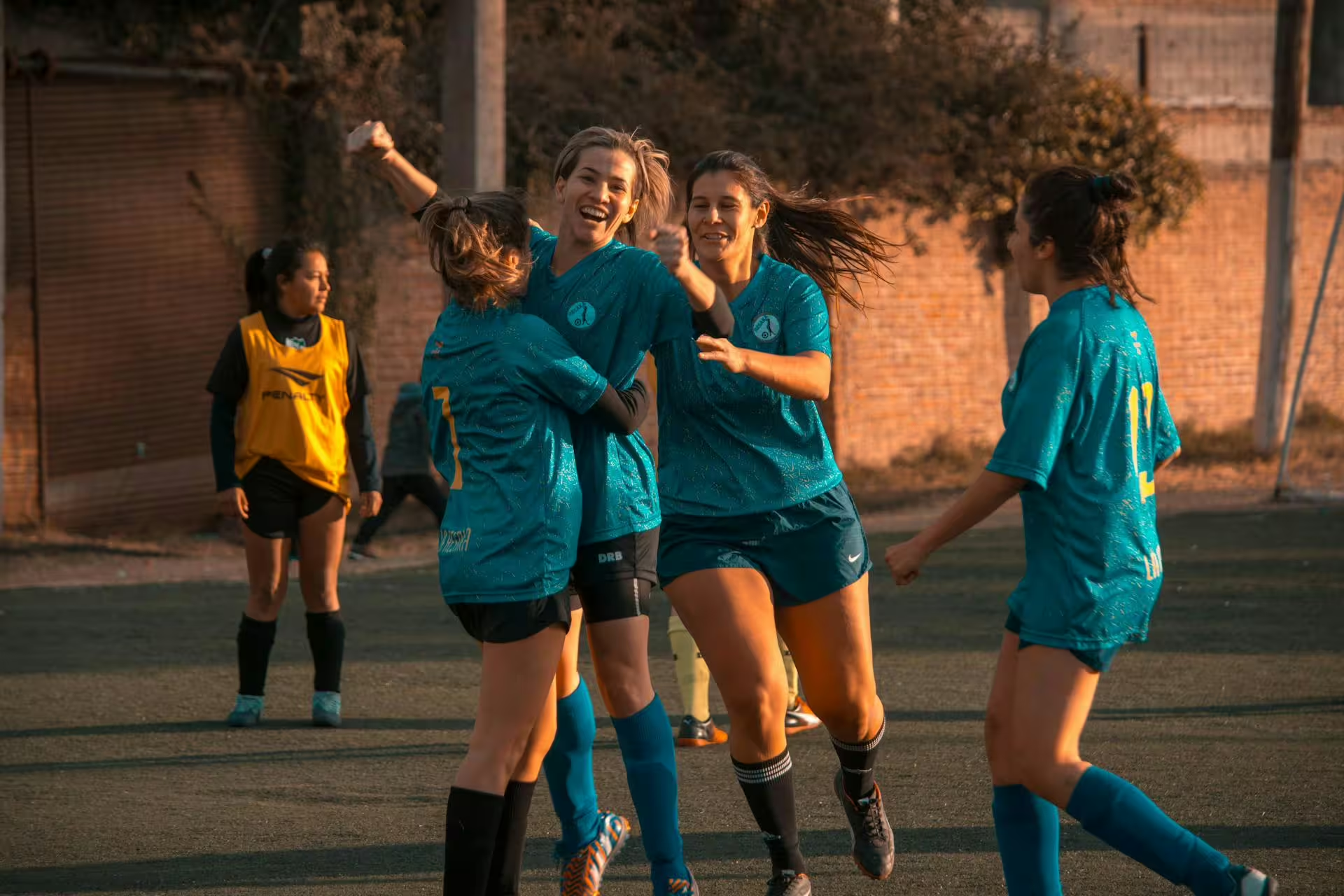Track and field is one of the oldest and most diverse sports in the entire world. We can trace its origins back to ancient times, all the way back to the Olympic Games in Greece. Today, the modern version includes a number of the same sports activities, most of them part of a wide range of events that test speed, strength, skill, and endurance. Track and field also has a long-standing tradition of celebrating individual and team athleticism.
Even in the modern age, this team sport remains a central piece of athleticism in schools, community leagues, and international competitions. In terms of specifics, for those that aren’t exactly sure what track and field entails, the sport is divided into three main areas: running events, jumping events, and throwing events. Each one of these events offers unique challenges and opportunities for young athletes to explore their physical potential.
It’s important to note that track and field is also highly inclusive, with events catering to a wide variety of body types and skill sets. Indeed, whether your child is a sprinter, a long-distance runner, or has a talent for throwing or jumping, there’s likely an event that will not only suit their interests but make use of their particular set of skills! Beyond the obvious benefits of physical fitness, participation in track and field can foster important life skills such as goal setting, perseverance, teamwork, and time management.
For parents of young athletes, understanding the different track and field events is the first step in giving your child a leg-up in the sport. Even a cursory knowledge can help you support your child, communicate with coaches, and appreciate the scope of their development at different stages. This is precisely where comprehensive guides like this become most useful. In this article, we will breaks down the events, their objectives, basic rules, and what children can gain from participating in track and field.

What Is Track & Field?
We eluded to a number of different things in the introduction, but track and field is, in essence, a collection of athletic events. Those events are generally divided into three main categories:
Track events – This includes races of varying lengths, including sprints, middle-distance, long-distance, and relays.
Field events – This segment includes events like jumping and throwing.
Combined events – These events tend to be competitions that include a wide range of track and field activities, combined. Examples are the decathlon or heptathlon, the latter of which is usually for older or elite athletes.
Track and field for kids offers a wider variety of physical activities than most other sports. It gives the kids a chance to try different skills. In fact, many programs rotate young athletes through different events so they can discover their strengths. This early experimentation not only builds a more well-rounded athlete it can also helps prevent overuse injuries. As with most youth sports, track and field is a great way to introduces children to healthy competition and has the potential to foster a love of physical activity in am uncharacteristically low-pressure setting.
Sprinting Events
100 Meters
The 100-meter dash is the penultimate sprint in track and field. This is because it also happens to be the shortest outdoor sprint event. Sprinting, in general, demands explosive speed and power. Note that in youth meets, shorter versions like the 50-meter or 60-meter dash tend to be more common.
What Parents Need To Know To Start:
- Start is from a crouched position using starting blocks (in older age groups).
- The race is over in less than 15 seconds, even for young children.
- This event is ideal for kids with natural speed and quick reaction times.
- Coaches often work with kids on their start technique, which can make a big difference in their overall performance.
200 Meters
The 200 meter event consists of a half-lap sprint around a standard track. It combines speed with endurance and is a test of sprinting ability over a slightly longer distance. This sporting event encourages development of curve-running technique and stamina. Kids who want to become adept must learn how to balance their burst of speed with pacing through the curve. Note that this is a good stepping stone between the 100 and 400 meters.
400 Meters
Once we get to the 400 meters, we are talking about one full lap of the track. The 400 meters is a true test of a young athlete’s speed, endurance, and mental toughness. This event helps kids build pacing strategies and learn to push through the usual fatigue. Young athletes also improve their lactic acid tolerance in this event, which is a key element of longer sprints.
Middle-Distance Events
800 Meters
If one lap is 400 meters, an 800 consists of two laps around the track. This grueling “sprint” requires a balance of aerobic endurance and sprinting ability on the part of the athlete. Kids who enjoy both sprinting and distance running may do quite well in this particular event. The 800 Meter teaches young athletes how to manage energy reserves and when to make their final push. The 800 is often a tactical race, where smart decisions matter just as much as fitness.
1,500 or 1,600 Meters (“The Mile”)
This classic event is meant to test an athlete’s aerobic capacity, pacing, and race strategy. Events like this are part of the National Physical Fitness Test for a reason. This activity promotes cardiovascular fitness and mental discipline. It should be noted that younger children often run shorter versions, like 1,200 meters. Nevertheless, learning how to pace over four laps is a valuable skill for budding track and field stars, and mile races often create a strong sense of accomplishment for kids.
Long-Distance Events
3,000 Meters and Up
Track and field isn’t all about short footraces, the sport also features longer events like the 3,000 or 5,000 meters, though these are typically for older athletes. Such events emphasize endurance, consistent pacing, and mental grit. For races like this, you will want to ensure that your child has proper hydration and nutrition when they are training in longer events. Note that these types of races also require strong time management and emotional support, as motivation can often dip during lengthy training cycles.
Cross Country
This name might sound familiar to some parents, even if they haven’t ever run track themselves. That’s because it is often part of school-based or club track programs and is something that many young track stars opt to do at some point in their sports career. Cross country is so-named because it basically involves running over natural terrain (grass, dirt trails). Kids who enjoy being outdoors and have solid stamina. It also builds mental fortitude, as terrain and weather often introduce unpredictability. Cross country promotes team spirit even in an individual sport.
Hurdle Events
80, 100, or 110 Meter Hurdles
Hurdles combine sprinting with technique. Kids must clear evenly spaced barriers while maintaining speed. Leaping the hurdles doesn’t just build coordination, flexibility, and agility, it is a physical representation of what a young athlete can achieve when they push themselves and rise to the challenge. Thus, it can help kids to build confidence as they learn to clear obstacles both physically and mentally. Coaches tend to focus on timing and stride rhythm when giving instruction for this event, which can help immensely.
300 or 400 Meter Hurdles
The event literally raises the bar for track athletes, requiring them to clear hurdles over a longer distance. It is an event typically reserved for older youth. Learning proper hurdle form early can help prevent injuries and build confidence. Be aware that these events test not just speed and technique, they also test an athlete’s ability to recover and maintain form while fatigued.
Relay Events

4×100 Meter Relay
Some events are more cooperative. Take for instance the 4×100 meter relay, where each of four runners sprints 100 meters and passes a baton to the next. This event teaches athletes about teamwork, timing, and trust. The baton exchange is a critical skill for track and field and relays often become the highlight of meets because of their fast pace and team dynamics. Practicing as a group is a great way to build friendships and experience shared goals with one’s teammates.
4×400 Meter Relay
Each athlete runs a full lap in this relay so it combines endurance with baton-handling skills in one, difficult package. Difficult though it may be, however, the 4×400 meter relay encourages camaraderie and the thrill of team competition. A note for parents: the 4×400 is usually the last event at a meet, so it brings the excitement and team spirit of the event to a strong finish.
Jumping Events
Long Jump
In this non-sprint event, athletes speed their way down a runway and jump as far as they can into a sandpit. The long jump requires a certain amount of speed, strength, coordination, and body control. Long jump helps kids learn explosive movement, takeoff technique, and aerial awareness.
Triple Jump
This is a more advanced jump involving a hop, step, and jump sequence. Practicing this jump teaches rhythm and balance and it is often introduced only after an athlete has mastered long jump. It adds a technical layer and is ideal for kids who enjoy challenges and precision.
High Jump
This is the most difficult of the three and in it, competitors run toward a bar and attempt to clear it vertically. Athletes are required to have explosive leg power and flexibility before attempting this event. While high jump also improves spatial awareness, body control, and self-confidence, it’s not an easy bar to clear…pun intended. That said, it is a thrilling event that rewards both athleticism and finesse.
Throwing Events
Shot Put
Athletes push (not throw) a heavy ball as far as possible using upper body and leg strength. This piece tends to be for larger age groups but weights vary and in all versions, form is emphasized over distance. Shot put builds muscle coordination and introduces concepts of leverage and core power into a young athlete’s repetoire.
Discus
In discuss, a flat disc is spun and released for distance. Think of it like an archaic and much more dangerous version of frisbee. Though it might seem silly compared to other track and field sports, discuss requires coordination, rotational strength, and balance. At the same time, it also encourages kinesthetic awareness and discipline in form.
Javelin (or TurboJav for Kids)
Don’t worry, your child will not be out there throwing spears on a field…well, not exactly. Kids use a safe, foam-tipped version of a traditional javelin called TurboJav to learn the motion of javelin throwing, without any added danger. The kid’s version of this is great for teaching basic mechanics in a fun, low-risk way. The event develops full-body coordination and can be an exciting introduction to throwing sports.
Combined Events
Pentathlon/Heptathlon
These, high-level events combine multiple track and field disciplines. While rare for younger athletes, some youth competitions do offer adapted “mini” versions. Kids who are all-around athletes and enjoy variety will do well in these events.

Cultured Athlete Says…
As you can see, track and field is a well-rounded youth sport that offers something for everyone. Whether your child loves to sprint, jump, or throw, there’s a place for them here. As parents, our role lies in understanding the different events and expectations, so that we can tailor our own and better support our child’s journey. Knowing more about the sport they love will also help parents to recognize their milestones and share in the joy of their kid’s personal journey and skill growth.
Remember, in track and field, it’s not just about speed or distance—it’s about discovering what your child can do and who they can become as they get better and better. With the right environment, guidance, and encouragement, track and field can inspire a lifelong love of movement, challenge, and achievement; which is something that all of us parents want for our children. You don’t have to run alongside them but you can absolutely cheer them onto the finish line!
Discover more from CulturedAthlete
Subscribe to get the latest posts sent to your email.






